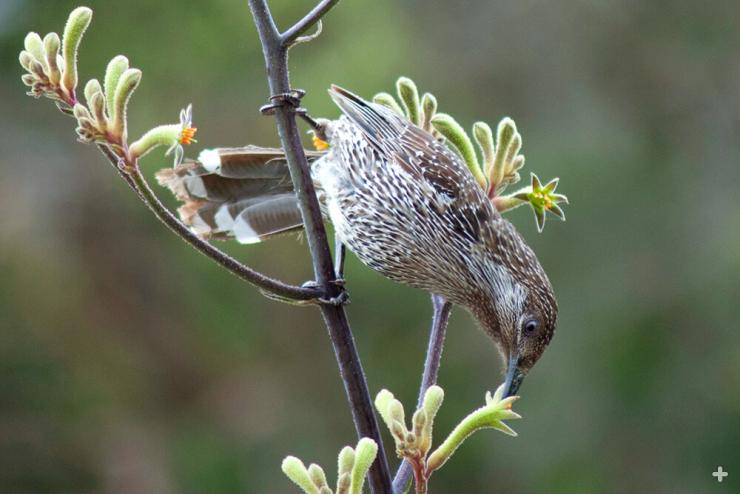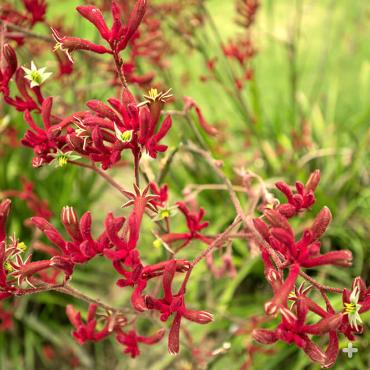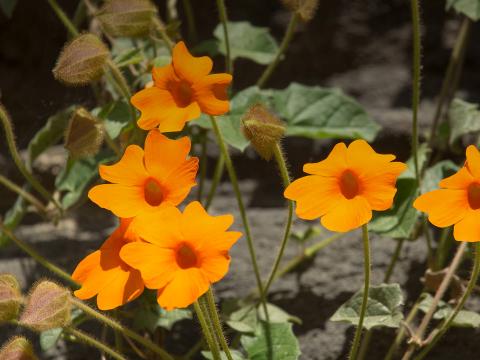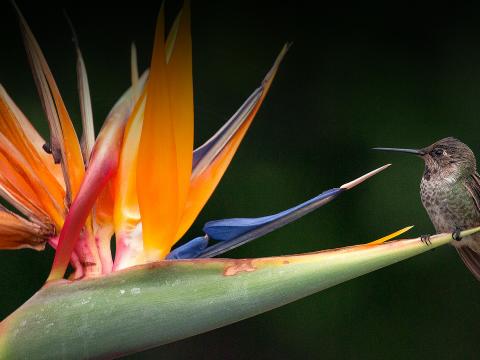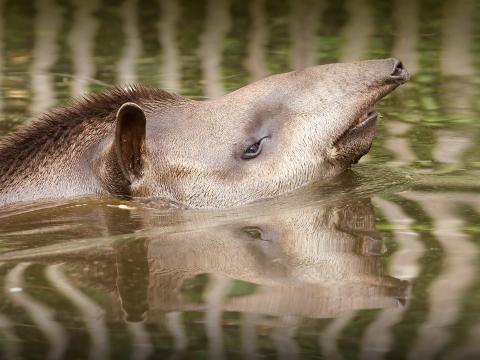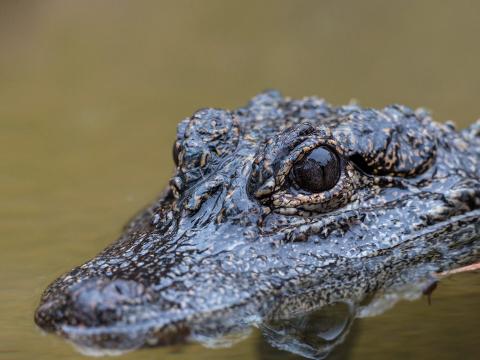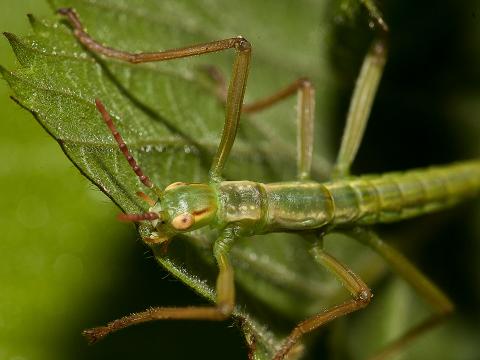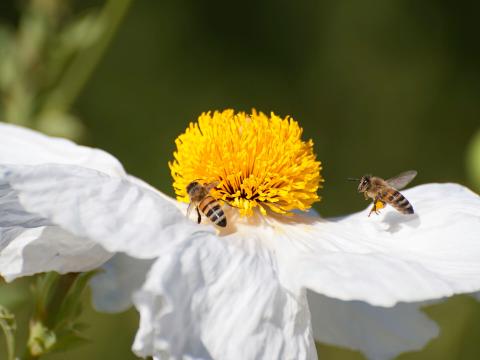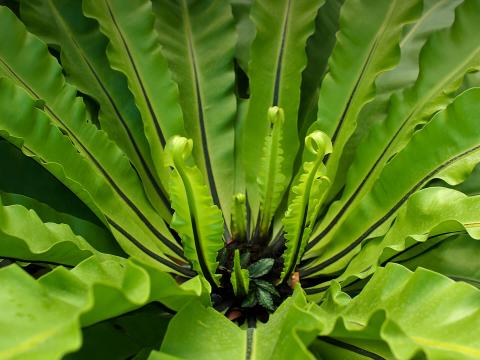Kangaroo Paw
- DIVISION: Magnoliophyta
- CLASS: Liliopsida
- ORDER: Commelinales
- FAMILY: Haemodoraceae
- GENUS AND SPECIES: Macropidia fuliginosa and seven Anigozanthos species
OVERVIEW
Waving a cheerful red and yellow "hello" as you enter Nairobi Village at the the Safari Park is kangaroo paw Anigozanthos flavidus. This whimsical plant gets its common name from its woolly, tubular flowers, which open to look like a kangaroo’s curved fingers. Although they’ve become a common site in California gardens, kangaroo paws are native to southwestern Australia. There they grow in sunny areas that get winter rain, and can be seen growing along roadsides. They’re pollinated by birds and small nectar-feeding possums. As a bird (or possum) feeds on the nectar deep inside a flower, pollen rubs off the anthers and onto its head. As the bird flits from flower to flower, it distributes pollen onto the stigmas of other flowers while picking up more pollen.
CHARACTERISTICS
Long—up to 6.5 feet (2 meters)—leafless flower stalks arise from a clump of strap-like leaves. At the tip of the stalk, velvety, tubular flowers grow in fan-like panicles. When a fuzzy flower bud splits open, six petals, curved at the tips (and reminiscent of a kangaroo’s claws), fan out to expose the pollen-bearing stamens and the pollen-accepting stigma, born on the central style. Depending on species, a kangaroo paw flower can be yellow, green, red, pink, orange, or brown. Some plants die back during a hot, dry summer or after a fire, but a thick, underground stem called a rhizome will shoot forth a new clump of leaves in autumn, when conditions are more favorable.
CULTIVATION
Kangaroo paws do best in a sunny spot with well-draining, dry, sandy soil, although some cultivars tolerate a variety of soil types. After your kangaroo paw flowers, you can remove the leaves and divide the rhizome. Kangaroo paws have become popular, water-efficient plants in California gardens, where they attract hummingbirds.

Little Kangaroo Paw

Tall Kangaroo Paw
The hardiest and most common species in cultivation, tall kangaroo paw can reach six feet (almost two meters) tall.
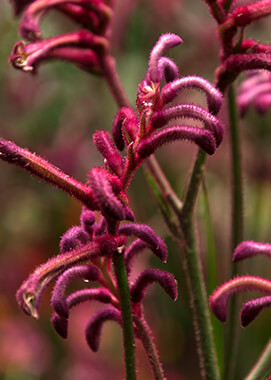
Dwarf Kangaroo Paw
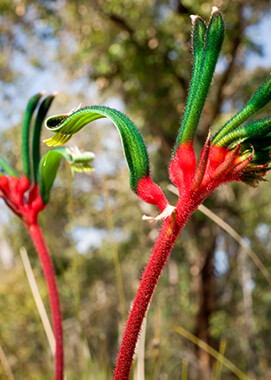
Red and Green Kangaroo Paw
The lovely red and green flowers of this species are the emblem of the state of Western Australia.
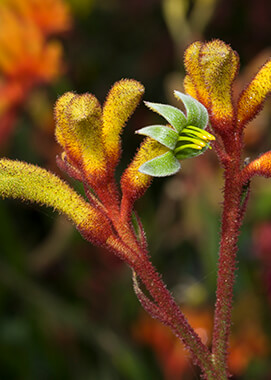
Golden Kangaroo Paw
Yellow flowers grow on reddish stalks.
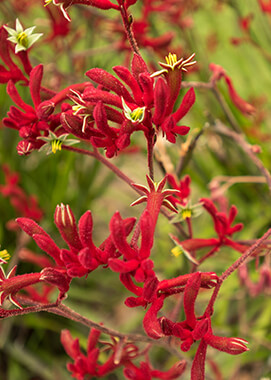
Red Kangaroo Paw

Green Kangaroo Paw

Black Kangaroo Paw
The only species in the genus, this black-and-lime-green flowering kangaroo paw is in the same family as the Anigozanthos species.


